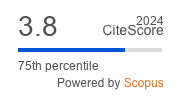Article | Open Access
The Kleinhaus and the Politics of Localism in German Architecture and Planning, c. 1910
| Views: | 2139 | | | Downloads: | 1306 |
Abstract: As an antidote to the substandard tenement apartment, the ideal of the “small house” (Kleinhaus) was ubiquitous in housing debates in Germany before World War One. Denoting a modestly sized two-story family house aligned with the street, it had its origins in the Middle Ages, during which it was constructed to serve the humble domestic needs of urban craftsmen who lived and worked in thriving trade cities including Lübeck, Bremen, Hamburg, Augsburg, Nuremberg, and Ulm. For modern promoters of low-density alternatives to the tenement, the Kleinhaus was an ideal model for mass appropriation. Unlike foreign and untranslatable dwelling models like the “villa” and the “cottage,” the Kleinhaus conveyed something that was both urban and quintessentially Germanic. It was thus enlisted by housing reformers to strengthen local cultural identity whilst raising the standards of the nation’s housing stock. This article examines the significance of the Kleinhaus in fostering dialogue between the fields of architecture and planning, and considers its embeddedness in a wider project of cultural nationalism in pre-war Germany.
Keywords: affordable housing; architectural typology; cottage; family; Germany; Heimat; localism; nationalism; photography; urban design
Published:
© Isabel Rousset. This is an open access article distributed under the terms of the Creative Commons Attribution 4.0 license (http://creativecommons.org/licenses/by/4.0), which permits any use, distribution, and reproduction of the work without further permission provided the original author(s) and source are credited.


